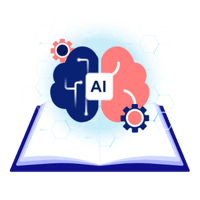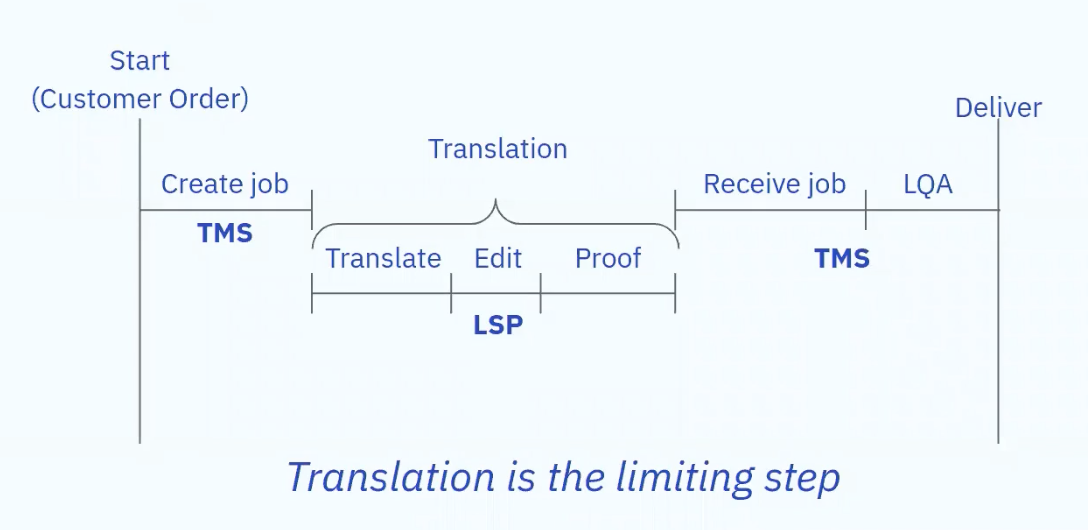Must-Know AI Translation Terms for Business Leaders

The AI translation space is an evolving industry that’s using new technologies and strategies as it continues to grow. It’s one that’s full of industry veterans from many departments that are helping to pave the way for future scale as well.
However, since AI translation combines many disciplines into one, cohesive idea, it’s riddled with terms and phrases that aren’t always so obvious to understand. It can easily feel like your peers are having a conversation that you may not pick up.
To help with that, we’ve compiled a list of the important terms in a simple and straight-to-the-point AI dictionary.

Adaptive Engine Training
This approach offers continuous training, eliminating the retrain/deploy cycle of custom engine training. The model is always trained on the most recent data and updates the deployed model’s parameters with each new training example. Lilt is a pioneer of this technology.
Application Program Interface (API)
An API is a piece of software that allows two applications to interact with each other.
Computer Assisted Translation (CAT) Tool
A CAT tool is one that’s built to help translators increase the speed and consistency at which they translate content. Some of the more popular features of a CAT tool include Translation Memories and Termbases.
Connector
A Connector is an integration that enables companies to send content from their existing systems to Lilt for simplified and optimized localization workflows. Allows for more automated, consistent localization.
Content Management System (CMS)
A CMS is a software tool that allows companies to create, edit, and publish website content more easily than traditional methods. Common CMS systems include WordPress, Contentful, and Drupal.
Contextual AI Engine
Artificial intelligence systems that can understand and interpret the context of a given situation or query to provide more relevant and accurate responses or outputs.
Custom Engine Training
Given a content-specific dataset, this approach tracks a model’s parameters once and deploys those parameters. If you want to train on one more example, you need to retrain the whole model and deploy it again.
Customer Experience
Customer experience is the entire experience that a customer may have with a company, from sales and marketing to customer support and product. A positive customer experience means that customer expectations are met at most (if not all) interaction points. Similarly, the customer journey is a progression of interactions that a customer or prospect may have with a company, service, or product. This journey often looks different depending on the company and customer and can often have an impact on customer experience.
Few-Shot Prompting
This technique involves adding training examples to the input of the deployed model, which also includes the text to be translated. The training examples influence the model’s output without adjusting the model’s parameters.
Fine-Tuning
This is a term specific to neural networks that is equivalent to adaptive engine training. It adjusts the model’s parameters for each new example.
Fuzzy Matching
Fuzzy Matching is the process where a CAT tool looks for segments inside of a Translation Memory with similar meaning and spelling. Fuzzy matches are often between 75-99% similar to an existing entry.
Generative AI
Generative AI is a type of artificial intelligence technology that can produce new content, including text, imagery, audio, and data.
Global Experience (GX)
Global Experience is the process of making a company’s customer experience multilingual and accessible by all customers and prospects, regardless of language or locale. Successful global experience consists of all internal teams aligning on global strategy.
Globalization
Globalization is the idea of bringing different countries and cultures together, whether separated by people, economies, or borders. Oftentimes, globalization is thought of as the umbrella goal that localization, internationalization, and translation all work to accomplish.
Human Feedback
The changes or acceptances of translation prompts. This feedback then enables the AI system to learn and adjust its behavior and output based on changing circumstances or new information from linguist feedback. Unlike MTPE, human feedback is learning in real-time and improves on its own with more feedback without the need to be retrained on data.
In-Context Learning (ICL)
Also known as LLM Fine-Tuning, ICL is a newer approach to translation that allows for rapid customization of a single model to a specific content type by updating the model's parameters with a constant stream of new training examples.
Localization (l10n)
Localization is the process of actually adapting to a specific locale or region. This often includes all visible pieces, like text and images, to make sure that they align with the culture.
Machine Translation (MT)
Machine translation is fully automated software that translates content from one language to another. Since a large portion of the world’s content is inaccessible to people that don’t speak the original source language, MT can effectively translate content faster and into more languages.
Machine Translation Post-Editing (MTPE)
Some companies use a translation approach called Machine Translation Post-Editing (MTPE), where content is translated using MT and then reviewed by human translators after the fact. While this workflow does cut costs, the quality is typically lower than human-in-the-loop machine translation or human-only translation.
Natural Language Processing (NLP)
NLP is a branch of artificial intelligence that focuses on allowing computers to understand language in a human way. It combines linguistics with technology to understand the meaning, context, and intent behind spoken and/or written language. Common examples of NLP include chatbots, speech-to-text software, digital assistants (like Alexa or Siri), and more.
Terminology Management
Terminology management is a process of researching, choosing, defining, updating, and maintaining key terms in the local language relevant to a business, product or service provider, or public or scientific institution.
Translation Management System (TMS)
A TMS is a software system that manages the localization process from start to end. More often than not, they’re meant to automate and streamline the localization workflow, making it easier to pass content back and forth for translation.
Translation Memory (TM)
A TM is a database that stores all previous translation segments. Those segments can then be used in future translations, saving time for translators, ensuring consistency for the brand, and saving costs for businesses.
TM Leverage
This is the term used to track and measure the frequency of TM use. The higher the leverage, the more often a TM is referenced in subsequent translations, likely providing faster turnaround and lower costs.
New terms are still appearing, so it’s important to stay on top of the latest developments in the industry and work with a trusted AI translation partner. .jpg?width=611&height=119&name=Lilt-Blog%20CTA%20(7).jpg)
.png)

